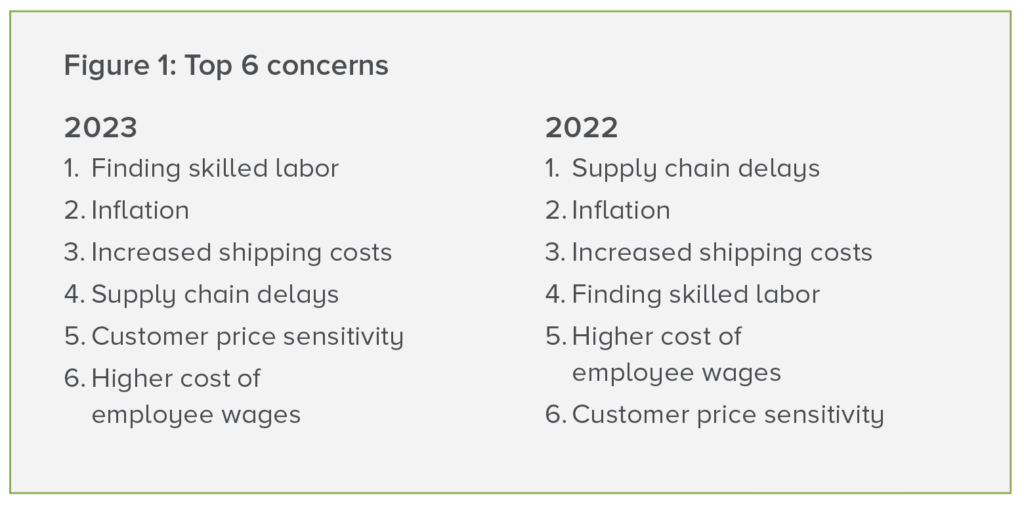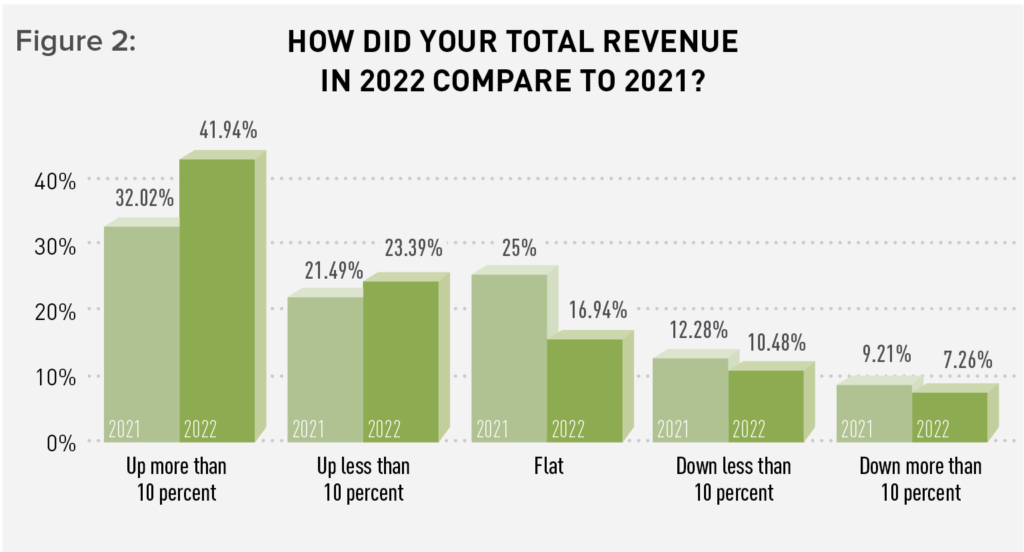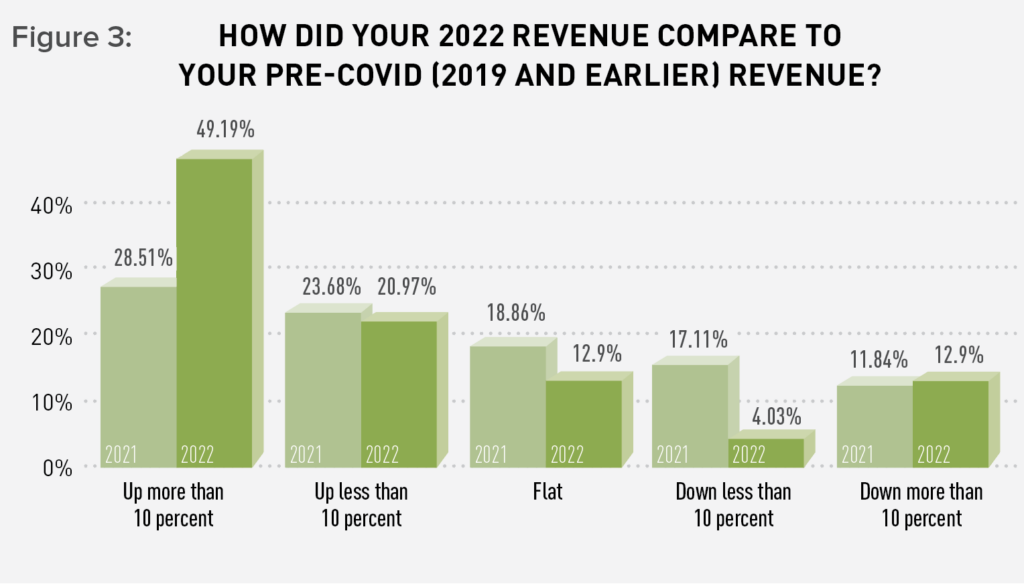At the start of each year, ATA surveys the readers of its various publications to learn about current trends, business challenges and opportunities. As anticipated, inflation, the supply chain and hiring remain the top concerns, but revenues are up and growth plans are in the works for most respondents.

Even though the makeup of each year’s survey takers is different, the 2023 responses were similar to last year’s in many respects: revenues and prices are up and many companies plan to expand into new markets. Five of 2022’s top concerns relating to costs, price sensitivity, labor and supply chain delays are still around this year, just ranked slightly differently. (See Figure 1)

This year’s survey found that revenues were up for 65% of respondents in 2022 (compared with 2021), and for 70%, are even above pre-COVID figures. (See Figure 2) About 18% reported revenues being down in 2022, and for 17% they are still down as compared with the pre-COVID era. (See Figure 3) One respondent noted, “Demand in [the] hospitality sector remains suppressed.”

Other concerns include cheap knockoff products, regulations, finding suppliers who will deal with smaller manufacturers and, of course, “Cash flow. Getting paid on time.”
Inflation and recession worries
Geopolitical and economic uncertainty always have a significant impact on businesses. Last year during the survey period, the war in Ukraine was front and center in the news every day and there was a great deal of concern surrounding how it would affect energy prices, markets and shipping/ supply chain logistics.
The aftereffects of that invasion—inflation from the higher energy and grain prices that continue to ripple throughout the global economy—still have people’s attention, however. Companies are paying more to employees and suppliers and spending more on utilities; plus, they’re worrying whether they can keep up with the “rising cost of living.” Ultimately, businesses have to pass at least some of those increases on to customers by raising their prices again (94%, with 58% having to raise prices by at least 10%), which may be why customer price sensitivity has reached this year’s top five concerns. Last year, 92% increased prices some too, with 63% increasing prices at least 10%.
Though the forecast for a recession had been pushed forward from the first quarter this year, as was predicted (with some prognosticators also thinking that it might not be as bad as previously expected), the “planned recession” was still bringing about “fairly conservative buying patterns,” one person reported. Another listed the “changing retail landscape” and “overpurchasing by customers in 2022” as affecting sales this year.
But maybe we can consider an element of “flatness” to growth to be cautious optimism as people wait and see how the expectations of a recession end up. Concerning the next two years of the markets, though 9% of respondents said that they didn’t anticipate growth in any market categories, a full 25% reported that they didn’t expect slowdowns in any, either.
The good news is that 63% of our survey takers expected revenues to rise in 2023, with almost a third projecting them to be up more than 10%. Flat revenues were forecast by 26% of companies. (See Figure 4)

Expansion plans
Most respondents let us in on their forward-looking plans over the next two years, with almost half working on new product lines with their existing capabilities (49%) and entering new markets (47%). Such additions should help those businesses concerned with growth (or lack thereof) in their existing markets. Forty percent plan to expand domestically. Few expect business to contract or that they will divest.
Going hand in hand with those growth expectations, the most important strategic areas for companies in the next two years include product diversification, improvements to supply chain/logistics, and employee development programs. (See Figure 5) On the latter issue, some company representatives reported having difficulty finding people interested in taking up the trade and then inspiring them in their career, especially the youngest generation entering the workforce.

Fortunately, nearly 83% reported their staffing levels as up or unchanged from last year, but with “finding skilled labor” moving to the top of the list of concerns and many companies having future expansion plans, it’s clear why retention of that labor is so important.
New facilities are in the plans for about 16% of respondents and acquisitions for nearly 20%. The U.S. Federal Reserve’s attempts to keep inflation in check by raising interest rates means that borrowing costs more, which also factors into people’s inflation concerns. New equipment is planned for 34%, and nearly 23% are exploring some kind of automation, a purchase or rental, which can keep the work moving, even in a tight labor market.
 TEXTILES.ORG
TEXTILES.ORG


